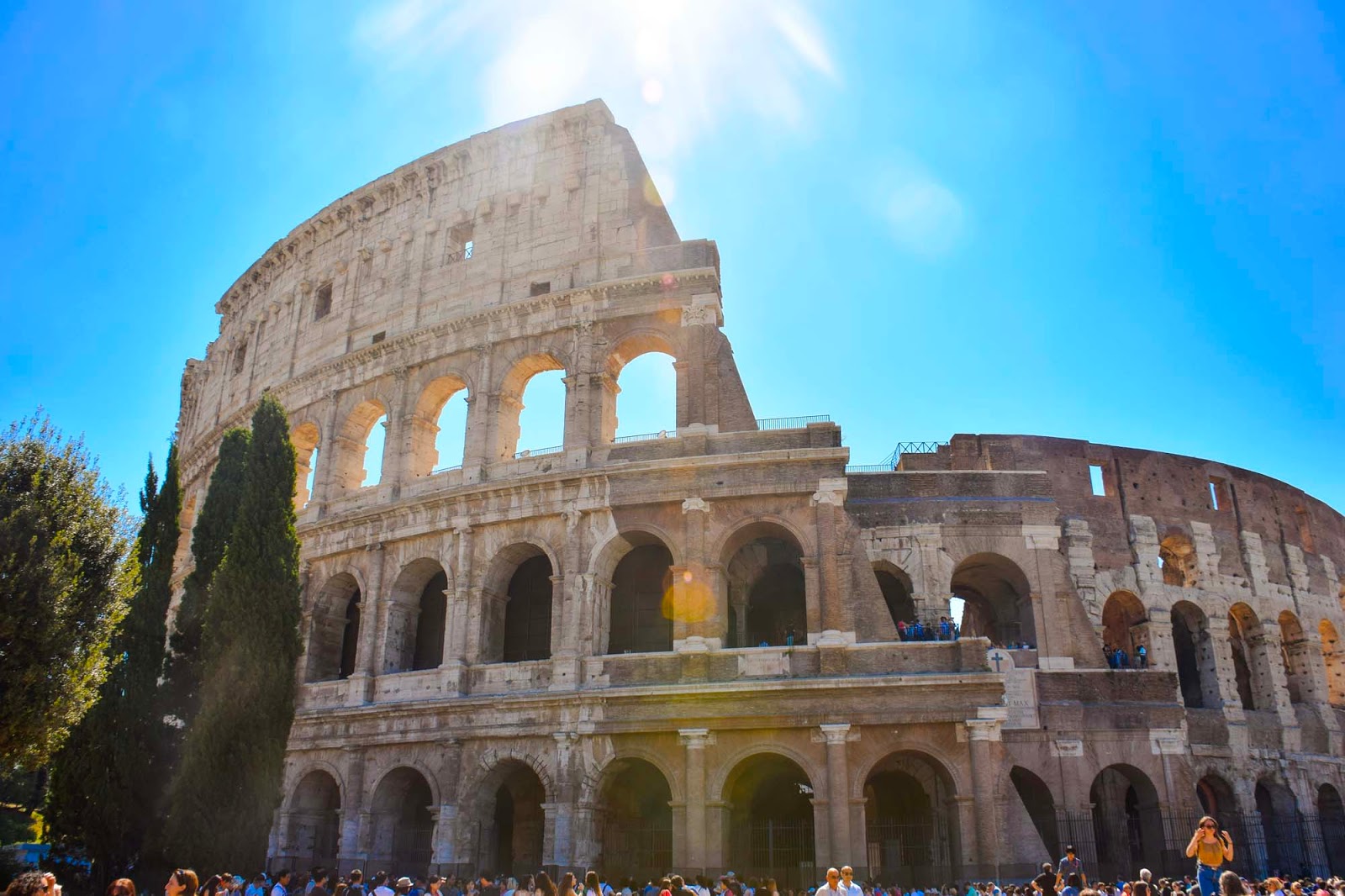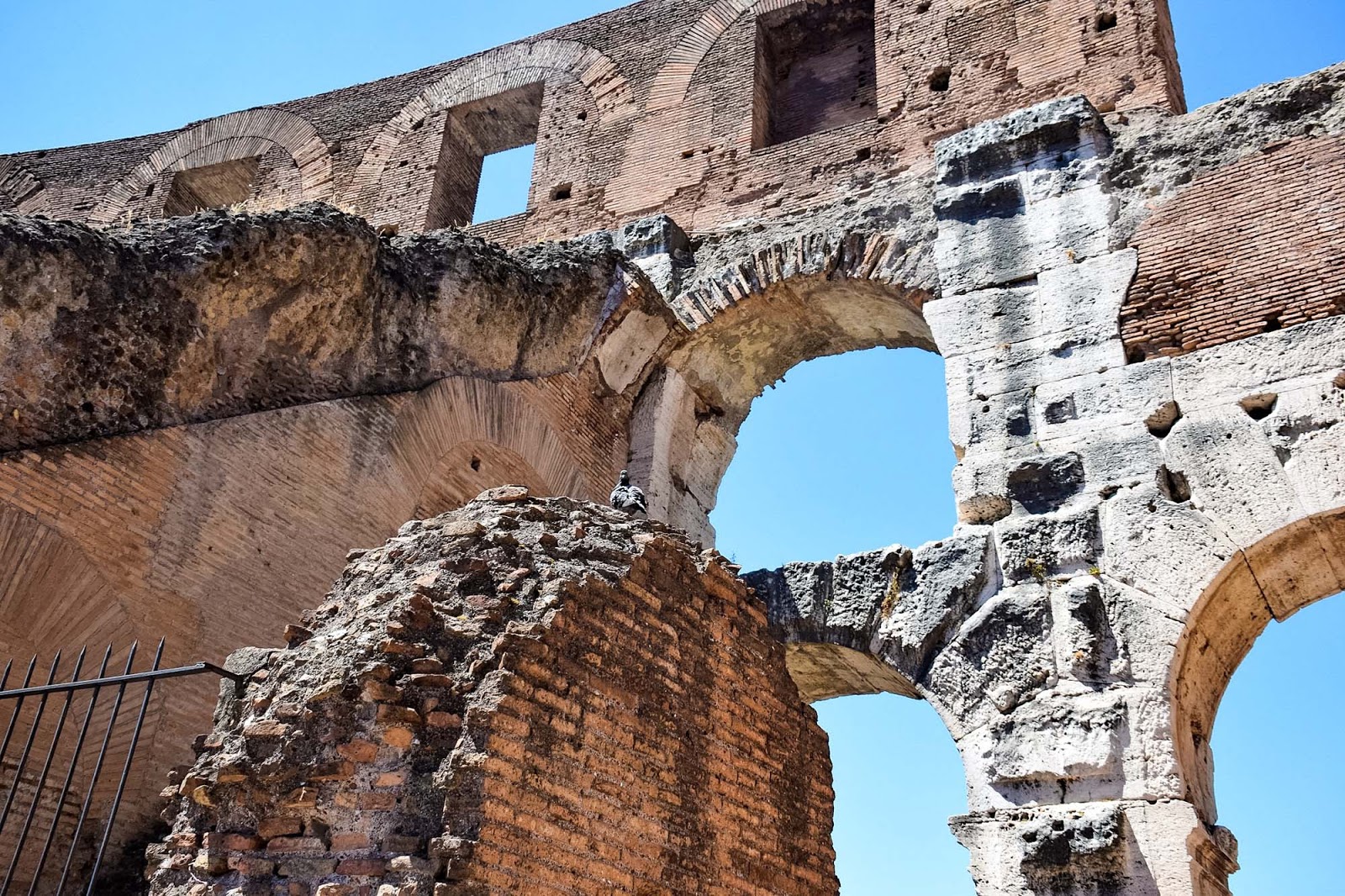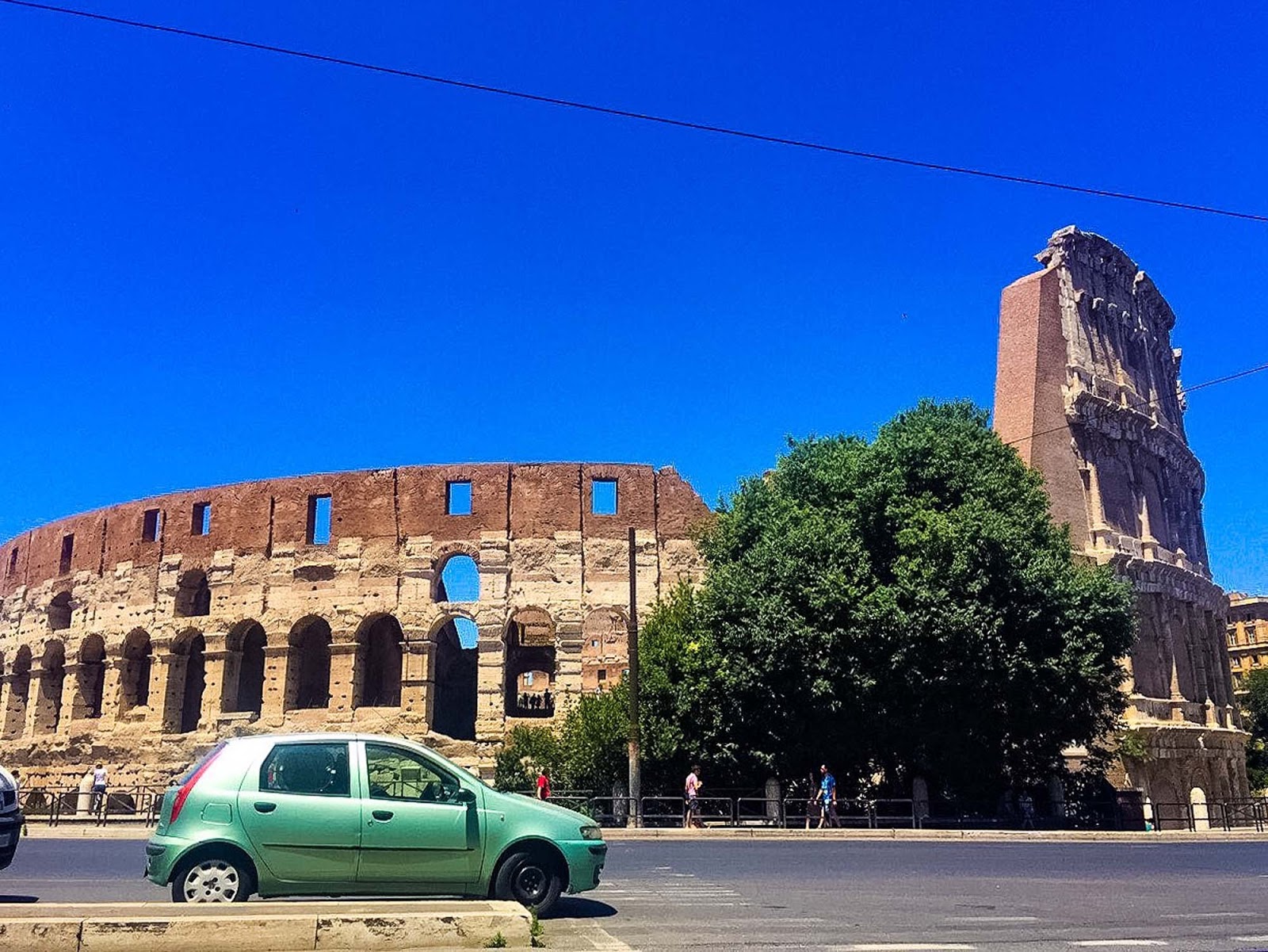The first time I visited the Colosseum I was thirteen years old and visiting with my family. We had been travelling in Europe for about a month and by the time we arrived in Rome, our last stop of the trip, I was so sick.
I don’t exactly know what it was, but I couldn’t see properly, had absolutely no energy, couldn’t walk anywhere and had such a high fever. I needed to be in bed to rest it off, but my family wanted to visit some sights and my mum refused to leave me in the hotel, so we left for the Colosseum.
By the time we got there I thought I was going to pass out. I could barely stand up or walk around, so my mum stayed with me on the grass lawns near the ancient sight, while my dad and sister had a little explore around. My sister was always so angry that my parents wouldn’t take her on the tour inside because I was so sick (nice sister hey, haha).
Needless to say, upon my return to this beautiful ancient city, I was so excited to finally get to step inside the Colosseum and look around. And of course, explore the city without passing out!
It is incredible to visit a sight that has such a rich and complex history, that has lived through periods of Emperors and Gladiators that we could only imagine.
History of the Colosseum
The Colosseum, or Colosseo in Italian, began being built in 72 AD and consists of 80 arched entrances with seating for up to 55,000 spectators. 76 of the gate arches were for the general public, with four special gates known as the Grand Entrances which could be used by magistrates, emperors, wealthy patricians, senators, visiting dignitaries and the Vestal Virgins.
The Emperor himself could access the Colosseum via a specially decorated tunnel which started at the Imperial Palace. Spectators were seated on four different levels, with the first level reserved for important Romans such as the Emperor, the Vestal Virgins, the important priests and members of the Roman government such as senators.
The second tier was reserved for people of noble class, such as knights, followed by ordinary Roman citizens on the third level, which are broken up into a further two groups – the lower class for wealthy citizens and the upper seats for poor citizens. The final top level was for women, with slaves strictly forbidden from the Colosseum.
The Emperor at the time requested for the Colosseum to be built in an aim to gain popularity by offering the public viewing of deadly fights between gladiators and wild animals. The Roman Gladiators were sometimes professional fighters who each specialised with different weapons.
Gladiators generally had a very short life expectancy, as fights were usually to the death, so the majority of fighters were slaves, former slaves or condemned prisoners. Gladiator fights were one of the most watched forms of entertainment in the Roman world.
Check out all the options for tours around the Colosseum
Tips for visiting the Colosseum
To avoid some truly crazy lines, it’s a good idea to buy your tickets in advance and avoid a long wait. If you’re not so prepared, skip the line at the Colosseum by purchasing your tickets at the Palatine Hill entrance, just down the road. The line was incredibly quick and offers the same tickets and price that you would find at the Colosseum.
The ticket gate for the Palatine Hill normally has little or no queue and is half way down the road Via di San Gergorio that runs from the Colosseum along the base of the Palatine Hill, less than 5 minutes walk from the main entrance to the Colosseum. Hop on hop off buses also have a stop right out the front of this entrance. You will still need to line up for security to get into the actual Colosseum, so make sure you bring lots of water to keep you cool and hydrated during your wait.
There is not a lot of information anywhere around the sights, so it’s a good idea to bring your own guide book or use an app like Lonely Planet Guides, which not only gives you factual information about the ancient sites and their history, but also great recommendations on other attractions to visit, things to see and places to eat in the local immediate area.
Admission: €12 for an adult, including admission to the Roman Forum & Palatine Hill
Opening hours: From 8:30am until one hour before sunset each day
The Colosseum || Piazza del Colosseo
Explore more of our adventures around Italy






 If you enjoyed this post, we'd love you to SHARE it for us!
Follow us on Instagram
If you enjoyed this post, we'd love you to SHARE it for us!
Follow us on Instagram 
























No Comments